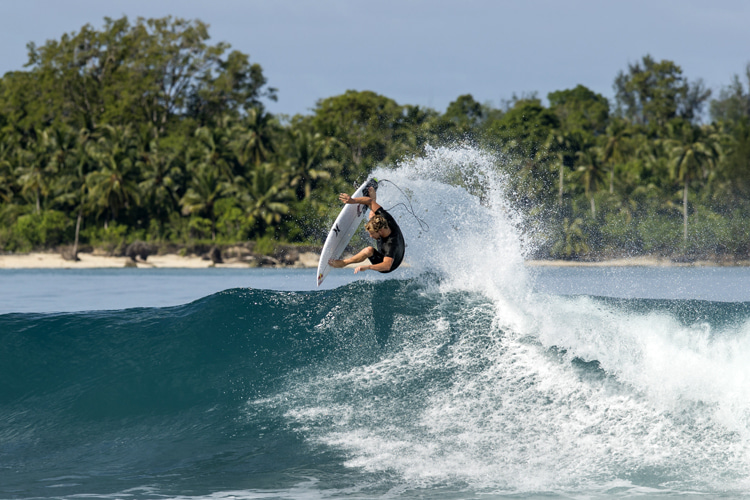Indonesia's status as one of the world's premier surf destinations began in 1936 when two young Americans arrived from Singapore and fell in love with the iconic strip of sand known as Kuta Beach.
Bob Koke arrived in Bali with his lover and soon-to-be wife Louise, who was fed up with her cheating Hollywood director husband, Oliver H. P. Garrett, and had fallen for Bob while he taught tennis at Garrett's home in Beverly Hills.
After meeting eccentric British ex-pat Muriel Pearsen, the now-married Kokes decided to go into business with Pearsen and began construction on the Kuta Beach Hotel - the first hotel of its kind on the south coast of Bali and the beginning of what would one day become a booming Bali resort industry.
During the construction of their hotel, sometime in 1936, Bob took a break from building to become the first person to surf a wave in Indonesia.
Having learned to surf while working on a film set in Hawaii, Bob had quickly seen the potential for riding the gentle, rolling waves of Kuta Beach.
But with his big redwood board back in the States (though soon in transit to Bali), he'd set to work crafting his own boards.
These were shaped in the Hawaiian alaia style and made from local wood with the help of Bob's local staff.
When his redwood plank arrived, he tried to teach his Balinese employees how to ride it, but with its immense weight and size, the task proved futile.
The smaller, lighter Hawaiian-style boards were soon ready, however, and these were more manageable.
Before long, Bob's local staff were up and riding, teaching keen guests of the newly finished hotel how to ride, too.
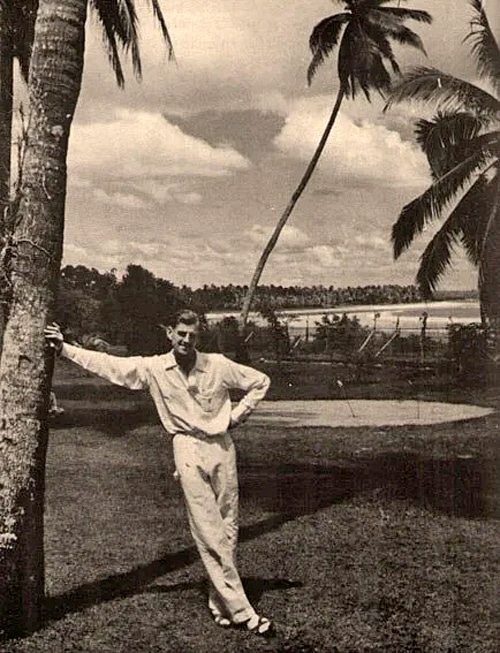
Surfing Indonesia: Then and Now
The hotel became a success in the years that followed, and guests were all too eager to take to the waves.
But the Kokes' hopes of a life in Bali were soon dashed by the belligerence of Imperial Japan.
With the Pacific theatre of World War II heating up and various states of Southeast Asia falling to Japanese conquest, Bob and Louise fled Bali on New Year's Eve in 1941, mere months before the invasion.
Indonesian surfing was to experience a nearly 30-year hiatus.
Then, in the late 1960s and early 1970s, a small group of adventurous surfers began to return to Bali, marking the beginning of surf exploration's golden age.
The era's zeitgeist was captured in cinematic style with 1971's "Morning of the Earth," directed by Alby Falzon and David Elfick.
The film, which has since become a surf classic, featured the first wave ever ridden at Uluwatu.
When the film hit screens in 1972, it left an indelible mark on the global surf consciousness.
The island, it was now said amongst surfers, was a crowd-free, wave-rich paradise. Bali was well and truly back on the map, and this time, it was here to stay.
In the decades that followed, an ever-increasing number of surfers made the pilgrimage to Bali.
And while it has remained wave-rich, it certainly hasn't stayed crowd-free - 6.3 million international tourists visited Bali in 2019, many of whom surfed.
Yet, as any surfer knows, there is a whole lot more to Indonesia than Bali.
Since the early 1970s, when a group of Americans made an expedition to Java and discovered G-Land, surfers have been continually expanding the frontiers of surfing in Indonesia.
Today, surfers can be found from Indonesia's westernmost edge in Aceh to its easternmost point in West Papua.
Despite this, the hunt for remote, perfect, and secluded waves is still very much alive - and very much achievable.
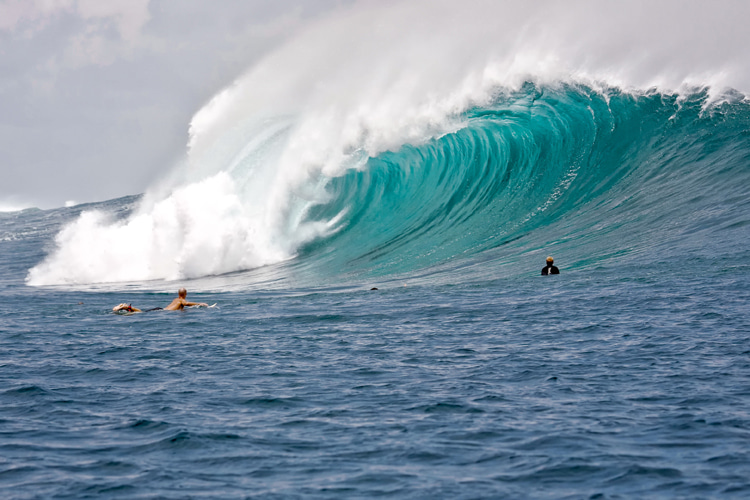
What Is Remote Surfing in Indonesia Today?
Remote is a somewhat tricky term to define. For Bob Koke, way back in 1936, Bali was unquestionably remote.
While Bali is frequently traveled by surfers from around the globe, there are many hidden gems in Indonesia still waiting to be discovered.
These are places that are often far from population centers and usually require more than a simple direct flight to reach, often only accessible by boat.
These are the places of remote surfing in Indonesia, and in the following chapters, we'll guide you through where, when, and how to make your remote Indonesian surf trip dream a reality.
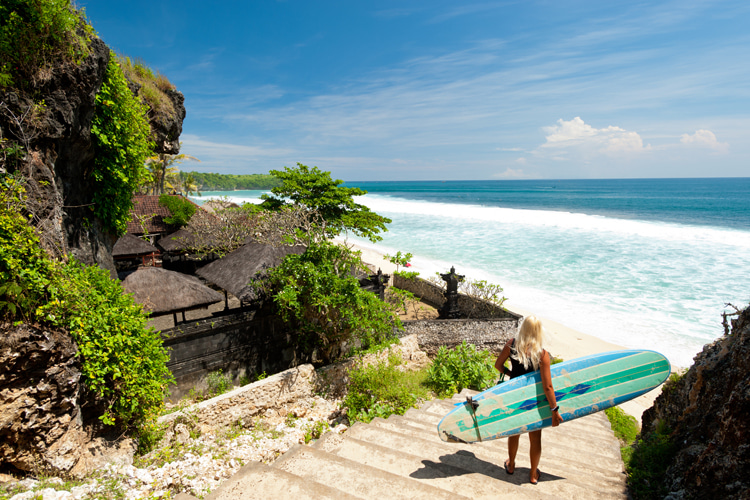
Chapter One
When and Where to Go
Boasting over 17,000 islands, Indonesia presents surfers with an incredible amount of options. And it's not just the quantity of waves on offer - it's the quality, too.
From mellow, sand-bottomed beachies to fast, barreling reef breaks, the waves of Indonesia provide something for every type of surfer, be they beginners or seasoned pros.
Nias and the Hinako Islands
When to go: April - October
Off Sumatra's west coast lies Nias, an island steeped in surf legend and one of SurfAid's key program areas.
Since its start in 2012, our Enhance Health of Women and Under Fives (EHOWUF) program has significantly reduced Nias's maternal and infant mortality rate.
While undoubtedly distant, Nias' most popular surf zone, Lagundri Bay, can get quite crowded.
Its main break, The Point (also known simply as Nias), is world-class, and the world's best flock to the solid right-hander whenever the conditions line up.
But there's more to Nias than Lagundri Bay.
Less than 20 kilometers off the island's west coast sit the Hinako Islands, quickly accessible from Nias via speedboat.
The small archipelago's most famous breaks, Asu and Bawa, were affected by major uplift caused during the 2005 earthquake but remained quality waves on their day.
The earthquake also created new waves, many of which remain unnamed and unknown to all but a lucky few - head to the Hinakos, and you could be one of them.
Sumatra
When to go: April - October
As the sixth-largest island in the world, Sumatra has a vast expanse of tropical coastline teeming with remote, high-quality waves.
The Krui area of South Sumatra has several great breaks, including Way Jambu (also known as the Sumatran Pipe), Krui Left, and Unjung Bocor, just to name a few.
Various beach breaks also exist nearby.
Much of West and South Sumatra is blocked off from incoming swell by the Mentawais, Telos, Nias, and Simeulue.
There is, however, a small section of Aceh, the island's northernmost province, that isn't cut off from swell.
Here there are several surf spots concentrated around the towns of Lhoknya and Meulaboh.
This was the region hit hardest by the Boxing Day Tsunami - whole towns were wiped out, tens of thousands were killed, and many more were made homeless.
A surf trip to this remote, often impoverished part of the world has the potential to really help the locals.
Simeulue
When to go: April - October
Simeulue sits north of Nias and is relatively unexplored compared to its southern neighbor, with just a handful of small resorts operating on the island.
Its best breaks include the barreling right-handers of Dylan's Right and Teabags, as well as The Peak, a picturesque A-frame setup.
Many other secluded breaks exist on this already secluded island, and it's not hard to find one all to yourself.
Banyaks
When to go: April - October
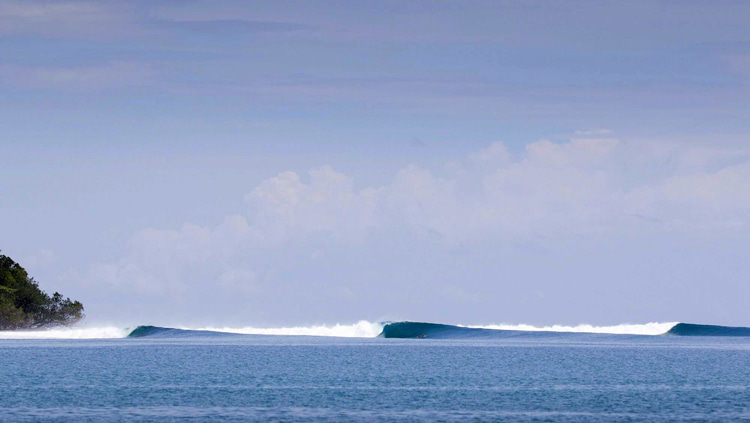
The Banyak Islands lie between Simeulue and Nias.
Sparsely populated and with minimal infrastructure, this cluster of islands is about as remote as it gets when it comes to surfing in Indonesia.
Quality waves in the area include Lolok Point, a long, barreling left; Treasure Island, an equally long, barreling right; and Joysticks, a multi-sectioned, tubing, and whackable wave that happens to also be the most consistent spot in the Banyaks.
A host of other spots exists, many of which are found in the wave-rich and aptly named Bay of Plenty.
Batu Islands (Telos)
When to go: April - October
The Batu islands, more commonly referred to as the Telos by surfers, are located just above the Mentawais.
With Nias to the north and the Mentawais to the south, the Telos are somewhat overlooked, yet they possess some stellar breaks.
Rangas is a ledgy right-hand reef break, and Bombers is a 200m right with three different barrel sections. These are just two of many.
Mentawais
When to go: April - October
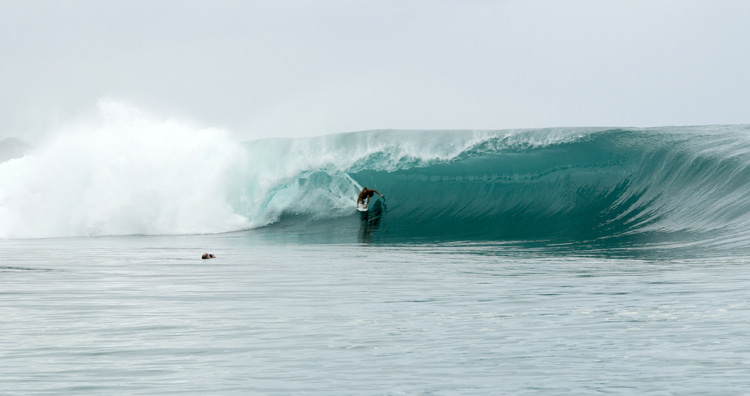
Approximately 150 kilometers off Sumatra's west coast are the fabled Mentawai islands.
First explored by surfers in the 1980s, the Mentawais, which consist of about 70 densely jungled islands, are home to some of the best waves in Indonesia (and the world).
They include the legendary Lance's Right (also known as Hollow Trees) and Macaronis, a high-performance left voted by Tracks Magazine as the best wave in Indonesia.
Dozens of other world-class waves exist, the top ten of which we listed in our article on the ten best surf spots in the Mentawais.
While the waves of the Mentawais are certainly cause for celebration, the islands are significant to us at SurfAid for another reason: they're where our story started.
Today, 22 years after our founder, Dr. Dave Jenkins, pledged to do something about the needless suffering he saw while surfing the Mentawais, SurfAid is proud to have improved the health and well-being of many in this remote part of the world.
Lombok
When to go: April - October
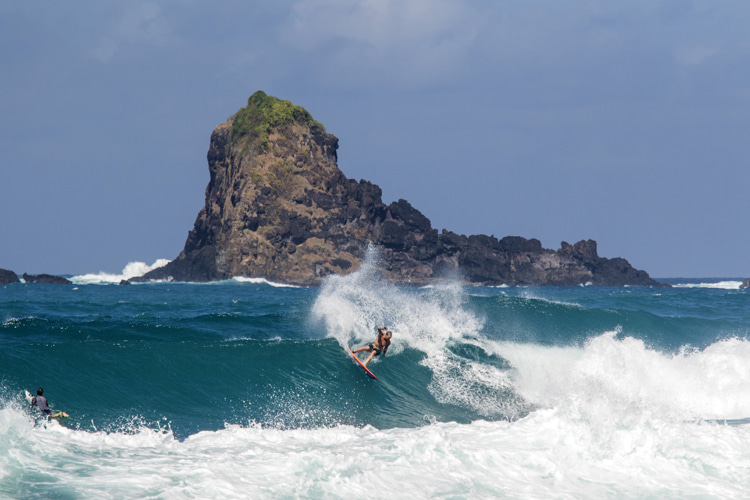
Lombok is the first major island to the east of Bali, and its propensity for perfect surf is almost equal to that of its more popular neighbor.
In fact, Desert Point - easily the island's best (and best known) wave - is widely considered among the best waves in the world.
But despite its fame, Desert Point has avoided over-development, owing in large part to its secluded location on the southwest tip of the island.
The wave itself, a lefthand reef break, is quite fickle, needing big ground swells to work, but when it does, the sheer length and ferocity of its barrels are arguably unrivaled.
Other great spots include Grupuk, an inlet home to several fun lefts and rights, and Mawi, a consistent A-frame setup.
Both spots are on Lombok's south coast.
Sumbawa
When to go: April - October
Sumbawa sits to the east of Lombok and is home to several world-class surf spots. Chief among them are Lakey Peak, a picturesque A-frame; Scar Reef and Super Suck, two fast, long, and barreling lefts; Yo-Yos, the site of two fun rights; and Periscopes, a sectiony right that offers barrels, walls, and ramps.
Despite being a playground for surfers, Sumbawa is a harsh place to live for many of the island's locals.
Their livelihoods, mainly in agriculture, are constantly at risk because of drought-induced crop failure.
SurfAid works alongside communities and government on the island, creating access to clean water, sanitation, and nutrition.
Recently, SurfAid introduced the first-ever solar-powered drip irrigation system in Indonesia to Sumbawa, ensuring food security in a region where rainfall has become increasingly irregular.
Java
When to go: April - October
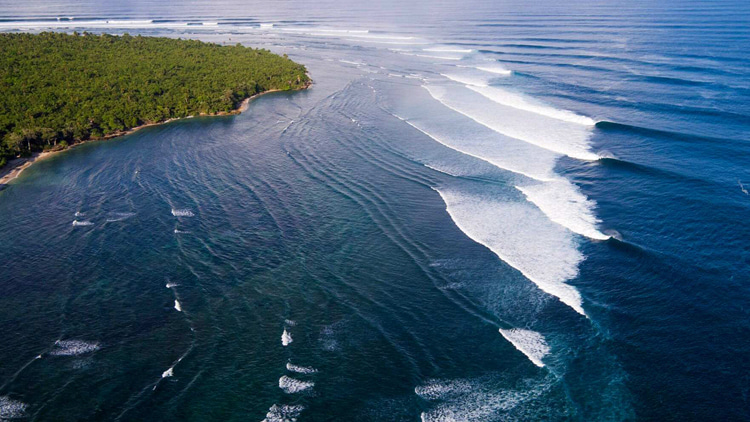
Java falls between Sumatra and Bali and is the world's most populous island.
But much of the Javanese population is concentrated in and around the island's biggest cities - Jakarta, Surabaya, and Bandung - all of which are located either in Java's center or on its northern, waveless coast.
Java's southern coast, however - the one that gets all the swell - is relatively unpopulated.
Java's most famous break is unquestionably Grajagan (better known as G-Land), a wave at the edge of a thick coastal rainforest on the island's south-eastern tip.
It's a long barreling left that's nothing short of world-class. Central and West are also home to an array of remote, quality waves.
Sumba and Beyond
When to go: Depends
Sumba's remoteness has given rise to a culture that's completely unique, so much so that it has become a focus for anthropologists.
But with this remoteness comes a lack of infrastructure and the unfortunate status of being one of Indonesia's poorest islands.
That's why SurfAid worked with Sumbanese communities to improve food security, sanitation, and access to clean water - measures that have significantly reduced the number of underweight children on the island and improved the communities' overall health status.
Sumba's poverty and related lack of infrastructure means that most surfers choose to access the island's breaks by boat charter.
Tarimbank (also known as Miller's Right) is a great wave that barrels and offers long, rippable walls; the areas of Kalala and Kodi also host fun, uncrowded waves.
Swells are most consistent from April to October, but March to June can be ideal, as this is before the southeast trade winds start.
Go beyond Sumba - to Flores, Rote, Timor, West Papua, and the Spice Islands - and you're arguably surfing the most remote regions of Indonesia.
T-Land is perhaps the most well-known break of these frontier zones, deriving its name from its likeness to G-Land in Java.
Many other waves exist, but information on their exact whereabouts and the conditions they require is scarce.
West Papua and the Spice Islands, being exposed to the Pacific Ocean, unlike the rest of Indonesia's surfable coast, is largely uncharted territory (for surfing).
The best way to explore these areas is via boat charter.
Guaranteed Waves
Generally, the best time to surf in Indonesia is between April and October.
Known by surfers as the on-season, this is when south and southwest swells are at their strongest and most consistent.
These months align with the dry season, when the weather is at its driest and least humid, making travel more pleasant.
Winds also tend to be favorable for many of Indonesia's breaks at this time.
What's generally known as the off-season, occurring roughly from November to March, can still serve up fantastic surf - and is way less crowded than the on-season.
At this time of year, though the swells are smaller, winds can still be favorable, and some waves are actually better than they are in the on-season.
Wherever and whenever you go surfing in remote Indonesia, you're almost guaranteed to get some fun waves.
And on the off chance that you don't, you're still surrounded by a tropical paradise of pristine beaches and untouched atolls, where snorkeling, diving, and fishing are some of the best in the world.
Chapter Two
How to Go
In terms of how you should go about surfing in remote Indonesia, there are three options.
The first is to stay at a surf resort, the second is to charter a boat, and the third is to do it yourself. Each has pros and cons.
Surf Resort
Wherever there's good surf in remote Indonesia, there's likely to be a surf resort nearby.
Stays at these resorts are usually sold as packages of 7+ days, with prices starting from around $180 per night.
Pros
Close to waves: in many cases, surf resorts have world-class waves literally right on their doorsteps, as well as speedboat access to nearby breaks.
Comfortable: you'll have the privacy of your own room, with various chill-out areas often located around the resort.
Land-based: being on land means that resorts are often spacious, leaving room for things like swimming pools, skate ramps, basketball hoops, and pool and ping-pong tables. Resorts might also offer cultural and nature tours of the island as well as bike rentals, meaning you can explore for yourself. All these activities make resorts great if you're traveling with a non-surfing partner, with a family, or if you get unlucky with sub-par surf.
Cons
Limited wave options: your resort might only have a few waves nearby, and accessing others by the resort's boat may come at an extra cost.
Vulnerable to poor conditions: if the conditions are bad around the resort, you're stuck. Even if the resort has a boat, its range is likely limited, and it may be used by other guests.
Potentially crowded: your resort may be remote, but if it has a capacity of 20 guests, all of whom surf, the break-out front can still get crowded. This is before taking into consideration visiting surfers from elsewhere on the island or those arriving on boat charters.
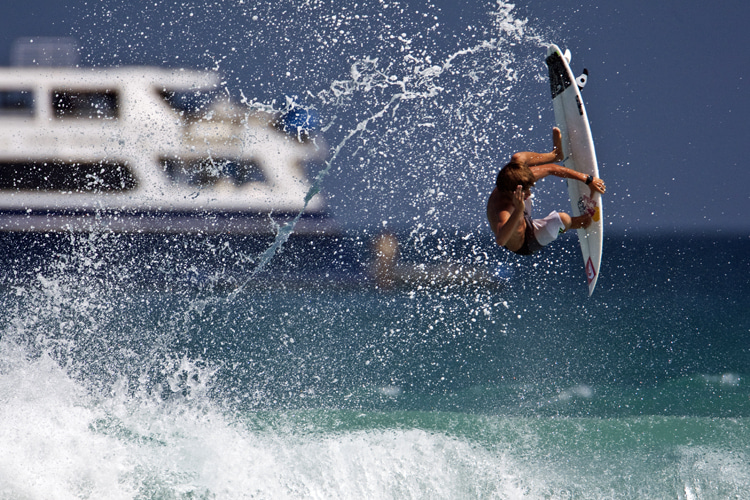
Boat Charter
Boat charters operate in nearly all remote Indonesian waters that have surf.
Trips usually last for a minimum of 10 days (longer trips can often be arranged), and the cost starts at about $2000 for a 10-day trip.
Capacity ranges from around 6-20 people.
Pros
Versatility: being on a boat, you have the power to sail off to wherever the surf is best or least crowded. Plus, boats usually cruise overnight, so you won't be wasting any of your daylight/surfing hours hunting waves.
Range: you'll have the potential to explore dozens of spots across multiple islands.
Cons
Lack of space: if you're someone who needs lots of personal space, a boat trip might not be for you. Having said that, there are loads of luxury-end charters that are almost like hotels on water.
Less individual choice: as you'll be with a group, you might not always get to go exactly where you want - it'll be a majority rules decision. So if you're goofy on a boat full of natural footers, don't expect to constantly be on the hunt for perfect lefts.
Limited activities: obviously, you won't have the same kind of land-based activities available as you would at a resort. However, fishing, snorkeling, and SUP gear are likely to be provided.
Do It Yourself
The DIY option is for intrepid surfers only - traveling through remote Indonesia in search of waves without the assistance of a resort or boat charter is no easy feat.
But if you've got time to kill and are after a more "off the beaten track" experience, then this might be for you.
Pros
Cheap: resorts and charters are costly in comparison to the homestays you'll likely stay at when going it alone. You could be staying somewhere for as little as a few dollars a night.
Authentic: the experiences you'll have along the way will be raw and personal, something that can be hard to replicate in resort and boat settings.
Discovery: though it's rare in this day and age, you could still stumble upon a new break or at least an empty lineup. This feeling of discovery that so few have dared to seek is surely priceless.
Cons
Difficult logistics: navigating the islands of remote Indonesia by yourself can be a logistical nightmare. Transport may be unavailable, roads may not exist, and it's likely that you won't even be able to communicate with locals due to the language barrier.
Dangerous: resorts and charters will be able to give you a rundown of each spot you surf, usually having years of experience in their respective areas. By yourself, however, there's no surefire way of knowing if what you're paddling out to is safe or even surfable.
Hit-or-miss: there's no question that the likelihood of scoring quality waves, and lots of them, is diminished by going the DIY way.
Chapter Three
What to Bring and Why
There's a big difference between a surf trip to Bali and a surf trip to remote Indonesia - and it's not just the crowd factor.
While Bali boasts nearly every type of modern convenience, from supermarkets to cinemas, you'd be hard-pressed to find anything more than a small warung or single television in many parts of remote Indonesia.
Because of this, it's absolutely essential that you bring the right gear.
In the Water
Boards, fins, and leg ropes
The reefs of Indonesia can be unforgiving - on bodies and boards. So, ideally, you'll need at least three sticks in your quiver.
Should one snap (or be damaged in transit), you'll have peace of mind knowing that you've got two left.
Get in touch with staff at the resort or boat charter you're going with, and they'll give you advice on what boards to bring for the local waves.
It's a good idea to bring a set of fins and a leg rope for each board, too, as these are just as prone to damage or breakage on sharp reefs in solid swells.
Clothing
Rashies or Surf Shirts
To prevent rash and sunburn that easily occurs when surfing for long hours under a harsh Indonesian sun.
While rashies are the more traditional option, surf shirts (which have only come about recently) offer a looser fit and the same level of sun protection.
They also look and feel like t-shirts, so you can wear them while ashore. Bring two to three.
Reef Booties
A pair of reef booties (not to be confused with cold water booties) is essential.
While you may not end up using them, there's always the chance you end up at a ridiculously shallow reef where your feet will come into contact with coral.
It's in these situations that you'll want protection, which will not only save your feet (and potentially the entire trip) but also give you greater confidence in the water.
Swimsuit or Boardies
Bring two to three.
Surf Hat
A good idea if you're especially fair, spending several hours in the water each day and/or just cautious when it comes to sun exposure.
Long-Sleeve Shirt
A few t-shirts are adequate, but make sure to bring one that's long-sleeve for evenings when mozzies might be about.
Waterproof Jacket
If you're jetting off via speedboat to a secret reef your skipper says has just turned on, a lightweight waterproof jacket is advisable.
The ocean spray, combined with the boat's high speed, makes for the coldest conditions you're likely to experience on your trip.
Essentials
Insect Repellent/Malaria Tablets
Malaria and dengue fever are both prevalent in many areas of remote Indonesia.
Bring insect repellent to ward off mosquitoes, and consult with your doctor regarding malaria tablets.
First-Aid Kit
While your resort or boat will have a first-aid kit, it's a smart idea to bring your own.
Include iodine (for reef cuts), band-aids, aloe vera (for sunburn), tweezers, and paracetamol.
Sunscreen/Zinc
These almost go without saying. If you don't wear sunscreen, you will burn - possibly bad enough to keep you out of the water for a few days.
Make sure that whatever you're wearing is water-resistant and at least SPF 30.
For your face, a base layer of sunscreen followed by a layer of zinc is a good way to ensure you're protected.
Food
While the majority of resorts and boat charters serve nutritious and tasty meals three times a day, those who like to snack should bring a few things from home.
Anything lightweight that takes up little space.
Hydralyte (or Equivalent)
Hydration solutions are an effective way to combat both surf and sickness-induced dehydration.
A Good Book
It's impossible to surf all the time, and all that physical activity will leave you in need of a good lie-down.
Also, as scary as it is to think about, the swell might be too small, or the winds might just be wrong - at times like these, a good book can keep you from going stir-crazy.
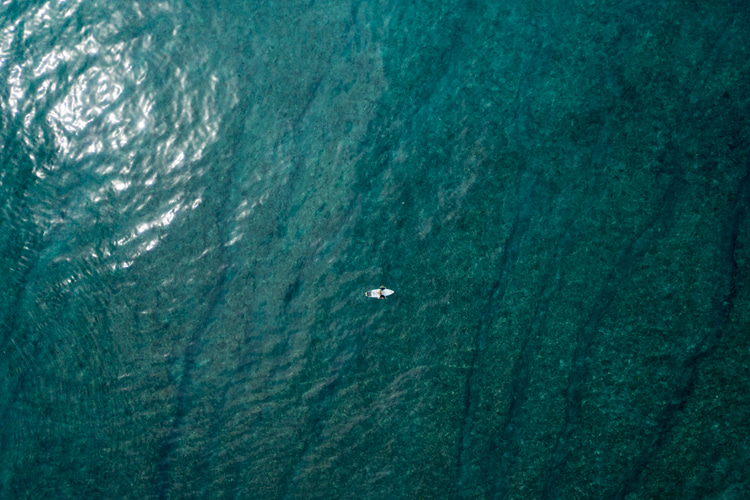
Chapter Four
Health and Safety
Traveling and surfing in extremely remote locations means, unfortunately, accidents sometimes do occur.
As a surfer, your main concerns are malaria, reef cuts, infections, and the intense heat.
Depending on where you go, be aware that medical care can be days away.
Go prepared and bring along essentials like antibiotics, malaria pills, and more with you.
Water
No matter where you are in Indonesia, do not drink tap water. Your resort or boat will provide you with safe drinking water.
Vaccinations
Before you go, check with your doctor on what vaccinations are needed.
Scooters/Bikes
While you can often ride a motorbike or scooter in Indonesia without a license, it doesn't mean that you should.
Riding without experience puts both yourself and others at risk.
Food
If you're on a boat trip, you'll be eating what's provided onboard.
But if you're at a resort, and there are villages nearby, you may have the option of eating outside your accommodation at local venues.
This should be done (if at all) with extreme caution - food hygiene standards outside where you're staying will not be up to the same standard, and all it takes is one unwashed fruit or undercooked piece of meat to leave you bathroom-ridden for the rest of your trip.
If you've chosen the DIY route, you'll have to eat at local venues.
Avoid ice, peeled fruits, and anything suspiciously raw or unrefrigerated.
The harsh reality is that you probably will endure some form of stomach trouble when consistently eating local food.
Chapter Five
Never Forget the Locals
As surfers, we're lucky to be able to travel to remote corners of the globe in search of perfect waves.
But in places like Indonesia, behind the perfect waves and smiles from locals, there are big issues affecting the community.
SurfAid is giving back to ensure we #NeverForgettheLocals.
We give a hand up to people in the heartlands of surfing by supporting communities with basic services like healthcare, clean water, and food security.
We work with each individual community to affect long-term behavior change.
We believe, and results show, that working with communities to develop their own solutions is the most effective form of aid.
There are some simple ways you can support the locals on your next surf trip.
Local Surfers - Surfing Etiquette
You're most likely to encounter local surfers while surfing the breaks around your land-based resort (for most Indonesian surfers, boat trips are simply unaffordable) or if you've gone the DIY route.
When you first paddle out, try to acknowledge local surfers in the lineup with a friendly nod and a smile.
Don't try to catch every wave that comes through - sit patiently and wait your turn.
If you behave courteously, it's likely that locals will start calling you into waves, and you might make yourself a new mate or two.
As the old adage goes - give respect, get respect.
Religious Culture
Islam is the predominant religion in Indonesia, and much of the nation's best remote surf, from Sumbawa to Aceh (with the exception of Hindu Bali), is in Muslim-majority areas.
The most conservative of these is the westernmost province of Aceh, which includes Simeulue, and alcohol is strictly forbidden in this region.
Clothing
Most importantly, be conscious of how you dress.
This is necessary not only in Islamic areas of Indonesia but in Hindu, Buddhist, and Christian areas too - culture in Indonesia, irrespective of religion, is generally more conservative than in the West, especially in remote communities.
Dress and act modestly, particularly around mosques, temples, and other religious sites.
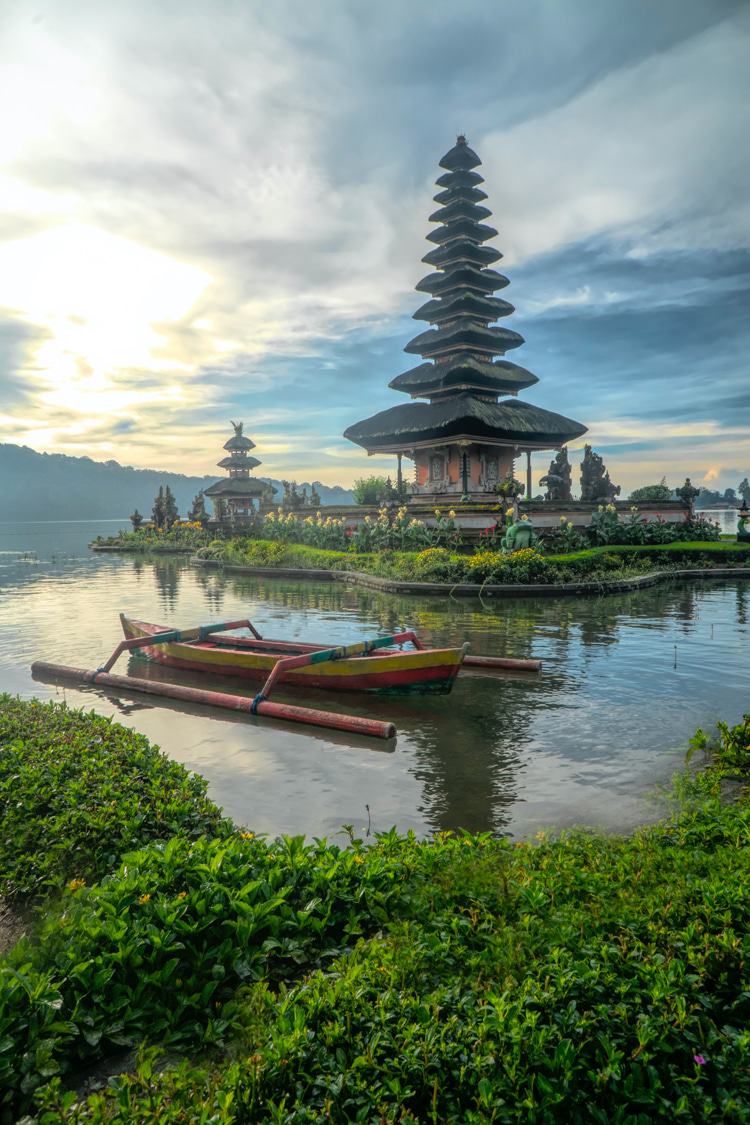
Conclusion
We hope you've found this SurfAid guide to remote surfing in Indonesia valuable.
We've shown you where, when, and how to go, what to bring and watch out for, and the importance of respecting the locals.
Now, with international travel slowly starting to reopen, it's the perfect time to start planning a remote Indonesian surf trip - good luck.
SurfAid's life-changing work in these remote areas gives back to people who are connected to us through surfing.
Your support could give a woman access to our mother and child health programs, help a community access clean water, or ensure a family has nutritious food on their table.
Join our HandsUp community today to be part of a global community of surfing change-makers who are dedicated to giving back to the places they love to surf.
To find out more, visit surfaid.org/handsup.
Words by SurfAid | International Charitable Organization
